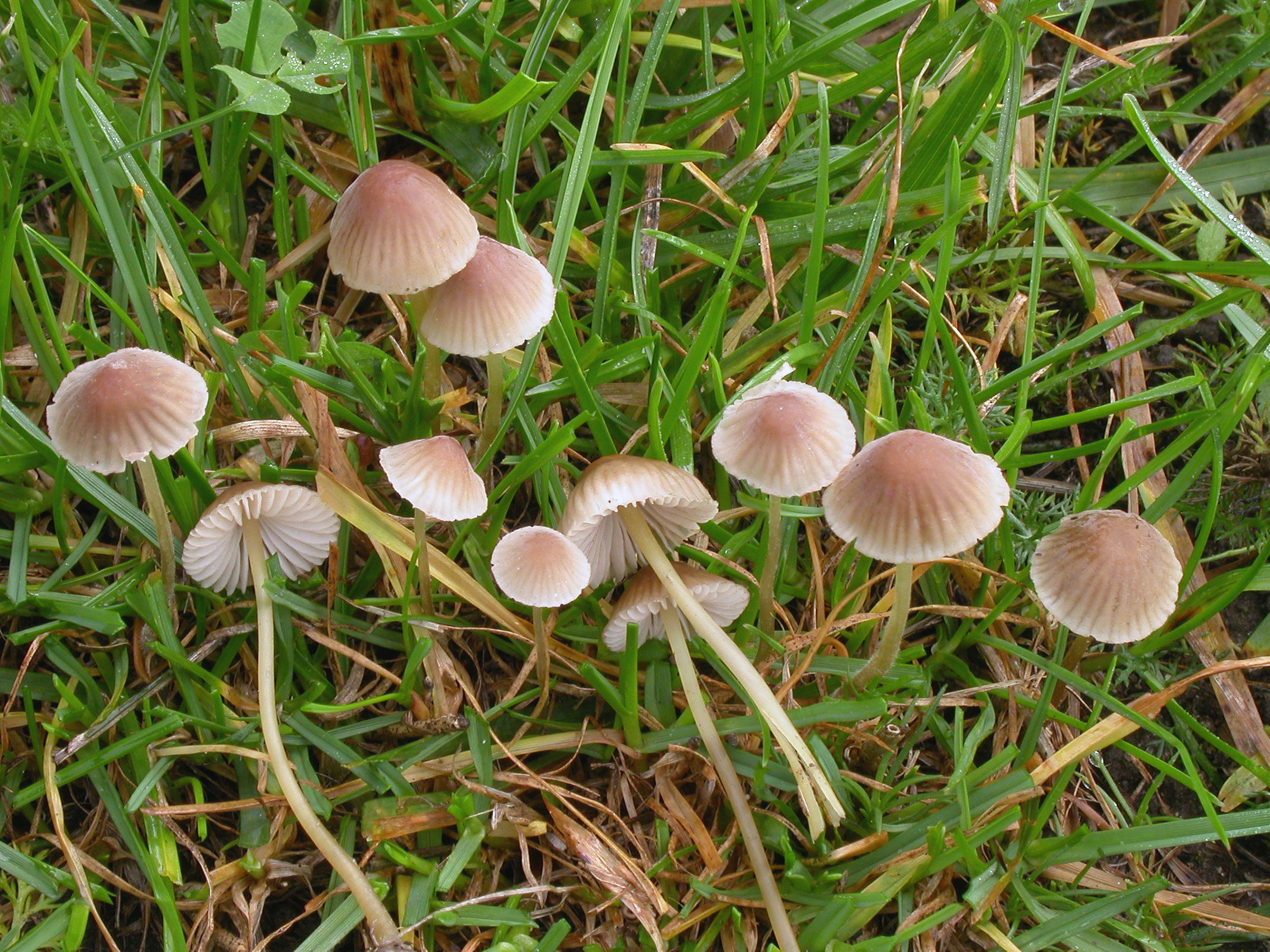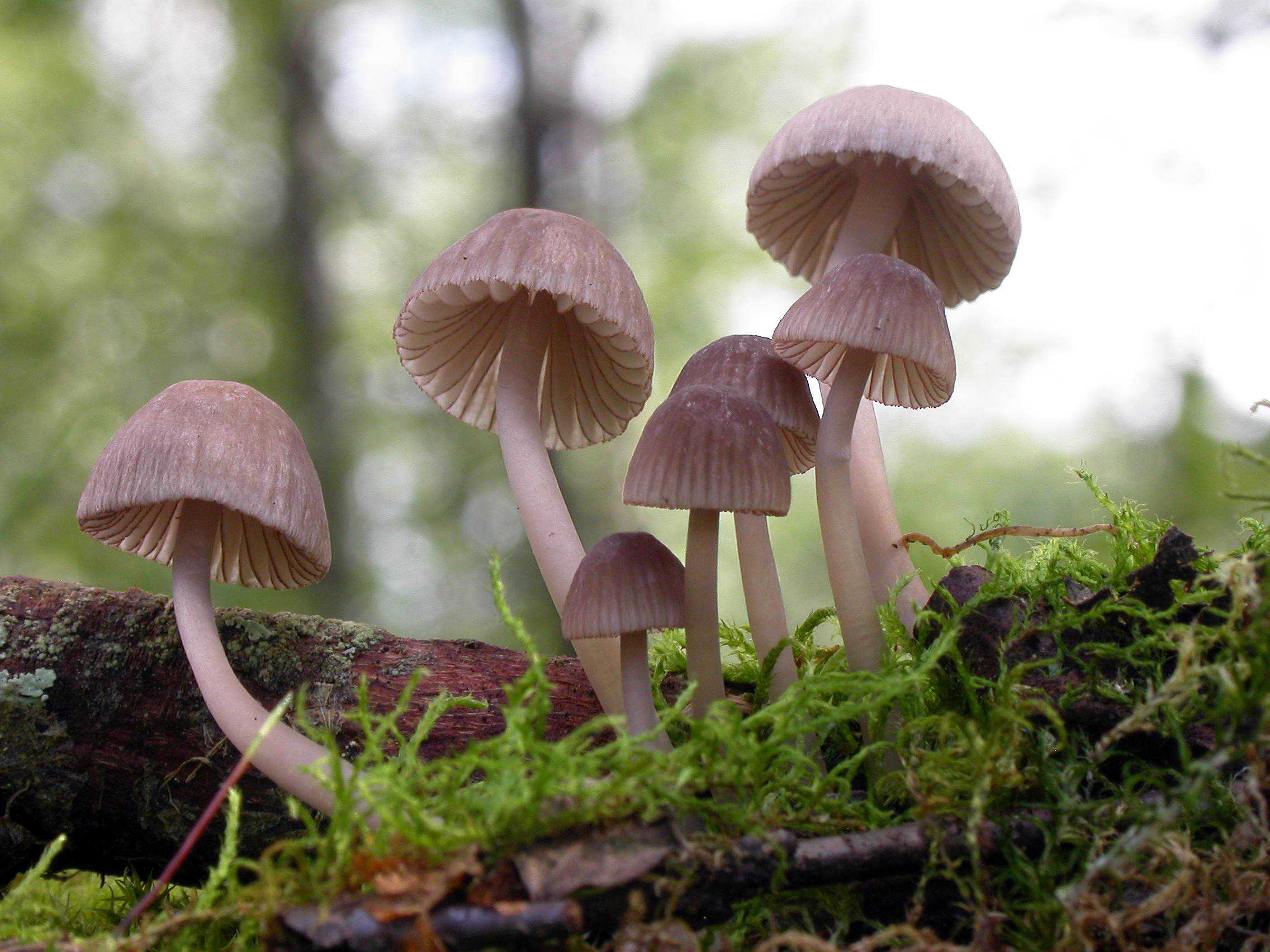Mycena capillaripes
Mycena capillaripes
Description
1. Hyphae of the pileipellis, 2. Cheilocystidia, 3. Basidium, 4. Hyphae of the cortical layer of the stem, 5. Spores, 6. Caulocystidia.
Cap 5-25 mm across, conical, obtusely conical, campanulate or parabolical, at age sometimes somewhat depressed centrally, pruinose, glabrescent, shallowly sulcate, translucent-striate, hygrophanous, pale grey to greyish brown, somewhat darker (often reddish) at the centre, the margin often very pale, pallescent when drying. Gills 12-20 reaching the stem, ascending, narrowly adnate, dorsally intervenose with age, whitish, cream to grey, the sides densely punctate with minute, dark red-brown dots (seen under hand lens, but not always easily seen), the edge dark reddish brown. Stem 20-70 x 1-1.8 mm, hollow, straight to curved, terete, fragile, glabrous except for the pruinose apex, becoming shiny, grey, greyish brown, darker below, the apex whitish to grey; the base covered with white fibrils. Odour nitrous. Basidia 27-30 x 7-9 µm, clavate, 4-spored. Spores 8-11.5 x 4.5-6 µm, Q = 1.5-2, Qav ˜ 1.8, pip-shaped to almost cylindrical, amyloid . Cheilocystidia 35 - 77 x 10 - 16 µm, smooth, fusiform or clavate, apically generally passing into a simple neck, but also with rounded apex; with reddish contents. Pleurocystidia numerous, similar, but sometimes without coloured contents. Lamellar trama dextrinoid. Hyphae of the pileipellis 2-8 µm wide, covered with simple to branched excrescences 1-30 x 1-3 µm which may form dense masses. Hyphae of the cortical layer of the stem 2.5-3.5 µm wide, smooth to sparsely covered with simple, cylindrical excrescences 2-8 x 1-2 µm, terminal cells 4-7 µm wide, coarsely diverticulate. Clamps present in all tissues.
Ecology and distribution
Generally gregarious on fallen needles of coniferous trees, but occasionally on litter of deciduous trees. Summer to autumn. Distributed, but fairly uncommon, in southern Norway.



